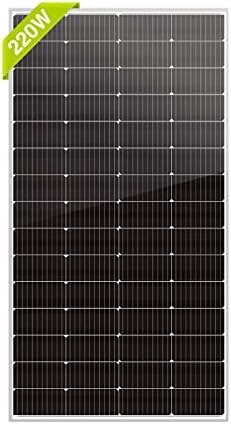# The Future is Off-Grid: How Off-Grid Solar Systems are Paving the Way for Energy Independence
Picture a sun-drenched morning in a remote valley where the only sounds are the cheerful chirping of birds and a gentle breeze rustling through the trees. Here, a small solar panel glistens on the rooftop of a cozy cabin, soaking up the sun’s rays. These solar panels are not just a source of power; they’re a bridge to a sustainable future. Off-grid living has transformed from a mere dream of self-sufficiency into a viable reality. Through innovative solar systems, individuals are claiming their energy independence, reshaping how we view power consumption and environmental responsibility.
## The Rise of Off-Grid Living
In recent years, a growing number of people have chosen to step away from the conventional grid to embrace a lifestyle powered by renewable energy. The appeal of off-grid living has skyrocketed, fueled by rising energy costs, an increasing awareness of climate change, and a quest for self-reliance. No longer reserved for survivalists or fringe groups, off-grid living is now a mainstream movement.
The advancements in solar technology coupled with an array of government incentives have made it more accessible than ever. From tiny homes to sprawling estates, individuals are seizing the opportunity to harness the sun’s energy, reduce their carbon footprint, and attain a level of self-sufficiency that was once unimaginable.
## Understanding Off-Grid Solar Systems
So, what exactly are off-grid solar systems? At their core, these systems allow you to produce, store, and use your own electricity without being reliant on traditional utility companies. A typical off-grid solar setup includes solar panels, an inverter, batteries, and a charge controller.
1. **Solar Panels**: These are the heart of any off-grid solar system, converting sunlight into electricity. The type and number of panels you’ll need depend largely on your energy consumption and location.
2. **Inverter**: This device changes the direct current (DC) energy generated by your solar panels into alternating current (AC), which is what most household appliances use.
3. **Batteries**: One of the key features of off-grid systems, batteries store excess energy generated during sunny periods for use during the night or cloudy days.
4. **Charge Controller**: This component protects the batteries, regulating the voltage and current coming from the solar panels to prevent overcharging and extend battery life.
### The Benefits of Going Off-Grid
#### 1. **Energy Independence**
One of the most liberating aspects of off-grid living is the independence it offers. By generating your own power, you’re free from fluctuating energy prices and the worry of power outages. You decide how much energy you need, allowing you to scale your system as your lifestyle changes.
#### 2. **Cost Savings**
While the initial investment in solar panels and associated technology can be substantial, the long-term savings can be remarkable. Eliminating monthly utility bills means that, after an initial payback period, you can revel in free energy for years to come. Plus, many states offer incentives such as tax rebates, grants, and other financial help that can ease the upfront costs.
#### 3. **Environmental Impact**
Harnessing solar energy significantly reduces your carbon footprint. Unlike fossil fuels, solar power is a clean and renewable source of energy. By opting for an off-grid solar system, you’re not just investing in your lifestyle; you’re contributing to a healthier planet for future generations.
#### 4. **Resilience and Preparedness**
In an age where natural disasters seem more frequent and unpredictable, being able to power your home independently can be a lifesaver. Off-grid solar systems provide a backup power source when traditional grids fail. This resilience can be invaluable during storms, floods, or other emergencies.
### The Future is Bright: Innovations in Solar Technology
The advancements in solar technology are nothing short of remarkable. Here are just a few trends and innovations that are shaping the future of off-grid solar systems:
#### 1. **Bifacial Solar Panels**
These innovative panels capture sunlight from both sides, maximizing energy production. They can be particularly beneficial in snowy regions where glare off the snow enhances energy capture.
#### 2. **Smart Inverters**
Modern inverters come equipped with advanced features that enable users to monitor energy production and consumption through smartphones, ensuring optimal efficiency.
#### 3. **Energy Management Systems**
These systems allow homeowners to analyze their energy usage patterns and adjust their consumption accordingly. By automating power management, you can balance supply and demand effortlessly.
### Pro Tips for Going Off-Grid
#### 1. **Calculate Your Needs**
Before diving into an off-grid solar system, calculate your energy consumption needs. Determine what appliances and systems you will use and how much power each consumes. This gives you a clear roadmap for your solar setup.
#### 2. **Invest in Quality Components**
Not all solar panels and batteries are created equal. Choose reputable brands that offer warranties and customer support. Quality components perform better and last longer, ultimately saving you time and money.
#### 3. **Consider Your Location**
Your geographical location significantly influences solar energy generation. Areas with fewer cloudy days will yield better results. Research local climate conditions to optimize your system.
#### 4. **Future-Proof Your System**
As your lifestyle changes, so may your energy needs. Consider installing a system that allows for easy expansion, whether through additional panels or batteries.
#### 5. **Stay Informed**
The world of solar technology is constantly evolving. Stay updated with new products, technologies, and regulations that could enhance or impact your off-grid experience.
### Embracing a Sustainable Lifestyle
Going off-grid is not just about independence; it’s a commitment to a more sustainable lifestyle. The freedom to live in harmony with nature and reduce your environmental impact encourages a deeper connection to the earth. With renewable energy sources at the forefront, individuals can create eco-friendly habits that ripple through their communities.
Consider adding a vegetable garden, composting waste, or utilizing rainwater harvesting alongside your solar setup. These practices complement off-grid living and can enhance your connection to the land while further reducing your reliance on external resources.
### Conclusion: The Path Forward
The future is indeed off-grid. With the continued advancements in solar technology, the desire for energy independence, and a collective push toward sustainability, off-grid living is becoming an achievable goal for many. By investing in off-grid solar systems, you’re not just powering your home; you’re redefining your relationship with energy and the environment.
As you embark on this empowering journey, remember it’s not merely about the tech—it’s about creating a lifestyle rooted in self-sufficiency and a profound respect for nature. Every solar panel installed and every battery charged is a step toward a brighter, greener tomorrow. Welcome to a future where the only limit is your imagination!



